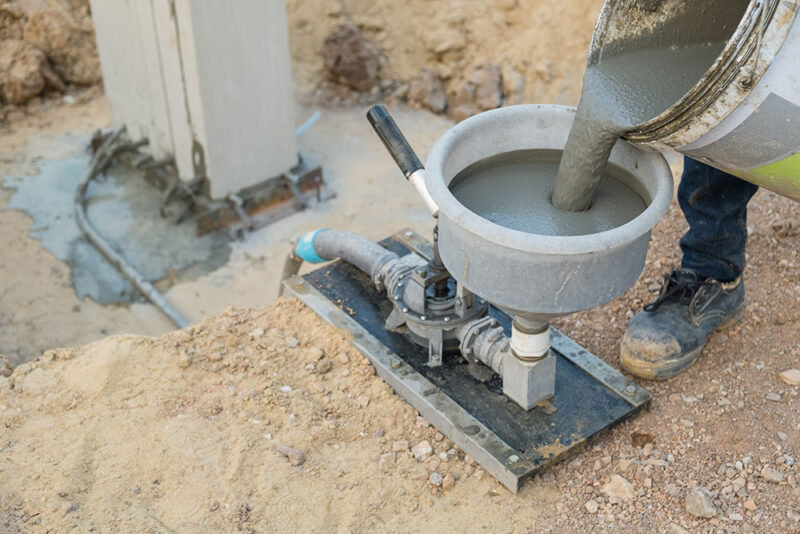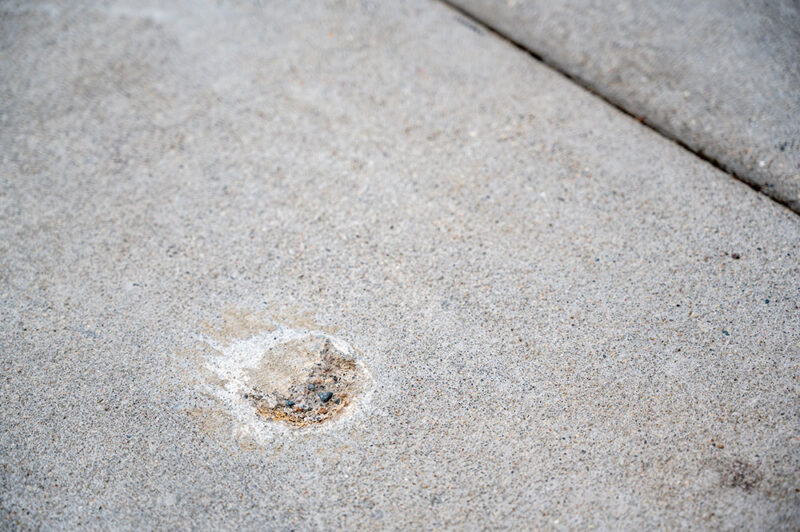Also referred to as “jet grouting,” pressure grouting is the process of injecting a grout material into an interconnected series of voids or spaces that would otherwise be inaccessible. The configuration or volume of these areas may not be known. In many cases, the process is simply referred to as “grouting.”
The material being injected into these spaces can be any of the following:
- Cement-based.
- Resin-based.
- A mixture of chemicals.
The best use for pressure grouting is to improve the effectiveness of soil and rock. It can also be used to reduce the amount of water flowing through a foundation, as well as to fix problems with concrete and masonry structures.
Since it was first used in the 19th Century, grouting was performed on foundations for almost every one of the world’s largest dams. This was done to reduce the amount of water leaking through the rock. Sometimes, it was used on foundations so it could support the weight of the overlying structure. It’s also important to the creation of post-tensioned prestressed concrete, which is a material that’s used in a lot of concrete bridge designs.

Pressure Grouting Pump
Methods for Pressure Grouting
There are several methods for pressure grouting, which include the following:
- Permeation Grouting – Also referred to as “penetration grouting,” this is the most common method. It involves filling up any cracks, joints, or voids in the rock, concrete, soil, or any other porous material. The idea is to fill the void without displacing the formation, creating any changes in the volume, or changing the configuration of the medium. The process is usually done to strengthen the existing formation, so an impenetrable water barrier can be created.
- Compaction Grouting – This method involves the injection of a low-mobility grout through drill casings that are drilled or driven to a pre-determined depth. The grout (which is usually made of cement, sand, fly ash, and water) is placed from the bottom-up with a pressure-based criteria. After each consecutive stage, the drill casing is lifted up until it has been taken out completely.
- Fracture Grouting – This method uses a low-viscosity grout that splits through the ground by hydraulic fracturing, as the material penetrates into the fractures. The in situ soil is displaced, as the soil next to the fractured area is made denser (but to a lesser extent than compaction grouting).
- Jet Grouting – This method uses a high-pressure “jet” of grout, water, air, or a combination of the three to erode soil as the grout is simultaneously injected into it through the use of a “jet monitor.” The specially-designed drill stem and monitor are raised and rotated at the same time, so the grout is combined with the original soil to form what’s referred to as “soilcrete.” The final product is round columns of cement, and it can be effective in any soil (but with varying degrees of efficiency).
While grout is typically propelled by pressure, the grout can also be “sucked” in if the void is under the pressure. This process is referred to as “vacuum grouting.”

Pressure Grouting Hole
Important Considerations for Pressure Grouting
The right grout type and viscosity, as well as the void characteristics will depend on the type of soil surrounding the structure. This is a very specialized process that often requires some type of study in engineering, as well as access to the right equipment and experience. The location and depth of the injection points must fit with the structure and properties of the grout, so the voids are filled properly. Pressure relief points are also needed to monitor grout flow and how much air is escaping.
In vertical structures, the grout injection must start at the lowest point going upwards. In horizontal structures, the grout injection must start at one end from post to port until the opposite end of the structure is reached. Plugging ports as you inject is important for maintaining proper grout pressure and for preventing unwanted internal voids.
Other important considerations for different pressure grouting applications include:
- Determining the right size, location, access points, and structural requirements.
- Looking at the surrounding conditions, presence of water or contaminants, as well as site temperatures.
- Determining if grout bonding or non-shrink properties are needed.
- Determining if the concrete element requires structural repair, cleaning, or any extra joint relief before injecting the grout.
If you have a foundation that needs repair and you’re looking for one of the best Corpus Christi concrete contractors, be sure to reach out to Streem Foundation Repair. We would be happy to speak with you about your specific needs!
